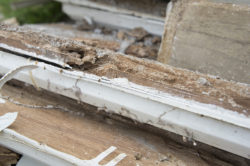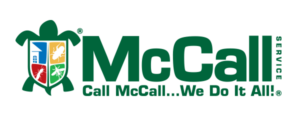Termites are highly destructive pests, causing billions of dollars each year in damages. The first and most important step in termite control is identifying the type of termite you are dealing with. Termite treatments depend on what type of termite you are treating for. There are three types of termites that affect Florida homes: drywood termites, dampwood termites, and subterranean termites. Let’s take a closer look at drywood termites, along with treatment options for this termite species.
Drywood termites range in size from 1/4″ to 3/8″ in length, depending on how old they are. These termites have thick waists, short legs, and straight antennae. Drywood alates (also known as swarmers) have wings that are equal in length. Drywood termites also have mouth pincers that protrude. These termites range in color depending on their role within the colony. Workers are cream to white in color; soldiers are cream to brown in color; and alates are brown or black in color. Drywood termites are found throughout the southern coastal United States.
Drywood termites differ from other species in that they don’t have to have contact with the soil (and its moisture) to survive. They nest inside the wood they are eating rather than underground. They also do not create mud tubes. Drywood termites can fly into structures they eventually inhabit and eat both across and along the grain of the wood. As they eat, they make small “kick out” holes in the wood to push debris out of. They prefer nondecayed wood (hence the drywood name). Inside your home they can often be found in wood flooring, fascia, window sills, doors, wooden frames, attics, and even furniture.
The most common signs of drywood termites are:
- Frass: Drywood frass consists of 6-sided fecal pellets that are pushed out through the holes they make in wood. They often resemble coffee grounds or sawdust.
- Blistering/Warping: Drywood termites will often tunnel right under the surface of wood, causing a blistered or warped appearance to the wood.
Drywood termites require different prevention techniques than subterranean termites because they don’t have contact with the soil. The best way to prevent drywood termites is to eliminate the initial infestation in the first place. These termites often access your home through cracks, vents, joints, etc. These should be closed off to prevent entry.
Another way to prevent these termites is to make the wood elements in your home less attractive to them. When possible, use pressure treated wood; if that’s not an option, treat wood afterwards with either borates or silica gel.
Annual termite inspections are another critical component of termite prevention. These inspections, which are performed by trained service professionals, help identify signs of termites and termite damage early, allowing for treatment before the damage gets too far.
Once you have established that you have an issue with drywood termites, there are 2 types of termite treatments that are effective at eliminating them.
- Tent Fumigation: Tent fumigation works well to eliminate drywood termites. A tent is placed over the entire home structure, which allows the fumigation gas to work. When the tent is removed, the termites have been eliminated.
- No-Tent Fumigation: No-tent fumigation is another option for eliminating drywood termites and is especially effective for structures that can’t be easily vacated. Affected areas are treated locally with the product applied directly to the source within the structure.
If you have a problem with any type of termites, contact your local pest control company for a thorough evaluation.



